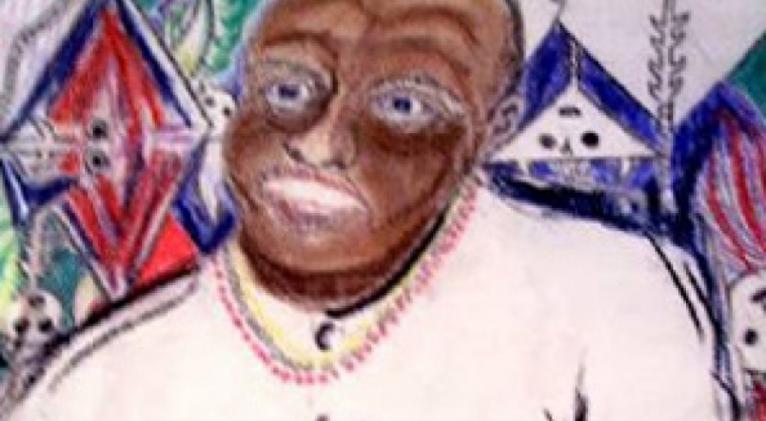Who was Papa Montero?
especiales

The informal universe, mixing the Spanish and the African, became Creole with time. Such universe has given life to some protagonists of Cuban musical works like Ernesto Lecuona’s Maria la O and popular Eliseo Grenet’s Papa Montero, sung by dozens of orchestras and soloists around the world.
What character inspired the creator of “Papa”? Well, let’s do it because there are two people with such nickname. It has triggered heated-up debates among historians and storytellers, annoying sons of myth, realities, and brain irritations.
The first of them lived in the early years of the 20th century in Isabela de Sagua, center of Cuba. He was a black man with cotton-like head. His teeth were impeccably white, Panama hat, guayabera shirt, and pleated jeans, and shiny double color shoes. This man likes to dance rumba accompanied by beautiful mulatto girls and is always present in parties and revelries where he finds lovers, drinks, and street fights. He competes against another party-lover: Jose Rosario Oviedo, aka Malanga. This man is the best dancer of Rumba Columbia. Papa is stabbed to death in the carnivals and he died smiling. His funeral became festivities for drums trumpets, guitars, and singers began extemporizing.
Despite this revelry environment, something weird happened. After the praises voiced by one of his friend, the widow got closer to the wooden coffin and amid a sepulchral silence she shouted:
Bastard….Partier!
Then, it immediately followed a rhythmical chorus:
To mourning Papa Montero, bastard…partier.
And all support the old black lady who could finally get all of this out her chest.
It was widely commented in the epoch and the composer Eliseo Grenet, half-brother of the late according to some gossips. The composer, in the 1940s, described the event in a popular song, which portrayed how Cubans regarded even death as a joke.
Here is a fragment in his Spanish version:
Señores, señores, los familiares del cadáver me han confiado
para que despida el duelo del que en vida fue Papá Montero.
A llorar a Papá Montero, ¡zumba!, canalla, rumbero.
Que era un viejo muy zalamero, ¡zumba!, canalla, rumbero.
Pero llora... llora… llora… llora… llora la rumba, canalla, rumbero.
Muy cordial y muy zalamero, ¡zumba!, canalla, rumbero.
El guateque ya está en el cielo, ¡zumba!, canalla, rumbero.
Pero qué rico baila al compás del cuero, canalla, rumbero.
Toda la gente en el barrio llora… y llora la rumba.
Todo el mundo lo quería, querían a Papá Montero (…).
Suffice to say that this lyric has triggered countless musical versions such as Trio Matamoros’, Tata Pereira’s, Antonio Maria Romeu’s, and Maria Teresa Vera’s. “Papa” was the song that lifted Grenet’s career, who popularized songs like La mora, Las perlas de tu boca, El tamalero, etc.
Cuban painter Mario Carreno pays tribute to dissolute old man from Sagua with the canvas Los funerales de Papa Montero (1949). National Poet Nicolas Guillen writes his “Velorio de Papa Montero” in 1931.
Fragment in Spanish of the poem Velorio de Papa Montero
Bebedor de trago largo,
garguero de hoja de lata
en mar de ron barco suelto.
Jinete de la cumbancha:
¿Qué vas a hacer con la noche,
si ya no podrás tomártela,
ni qué vena te dará
la sangre que te hace falta,
si se te fue por el caño
negro de la puñalada?
¡Ahora sí que te rompieron,
Papá Montero!
Octavio Cortazar recalls his figure in La ultima rumba de Papa Montero, a fiction documentary made in 1992, while Enrique Pineda Barnet alludes to his figure in La Bella del Alhambra.
Manuel Villabella, in the Antenas Magazine (1997), refers to another Papa Montero, which is quite different to that narrated by musicians, poets, and playwrights. This aforementioned man is from San Luis, Santiago de Cuba. Since 1919, this 350-pounds man drove a renting Ford with bright signs.
Despite his obesity, this Papa Montero also dances rumba, guaguanco, or even mambo, all of them with humor in his “choreographies.”Hence, his nickname Papa complements his real name (Luis Felipe Montero) until his death in Palma Soriano.
Thus, Papa Montero became popular thanks to the visit to San Luis of theater company Arquimides Pous from Cienfuegos.
By a quirk of destiny, Pous, famous for playing a naïve, humorous, and with a really bad phonetic “pickaninny”, gets on Papa’s taxi and decides to write a one-act comedy entitled Pobre Papa Montero. However, Papa is pictured in the comedy as a bon vivant, go-getter, and storyteller.
So who is the true Papa Montero, the one in Isabela de Sagua or the fat man from San Luis? Well, it is your choice. Anyway, I believe both describe the best of Cuban folklore.
Translated by Sergio A. Paneque Diaz // CubaSi Translation Staff













Add new comment